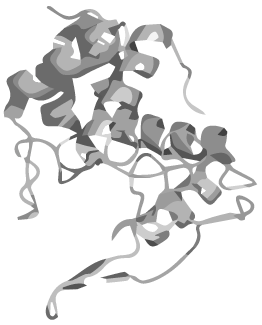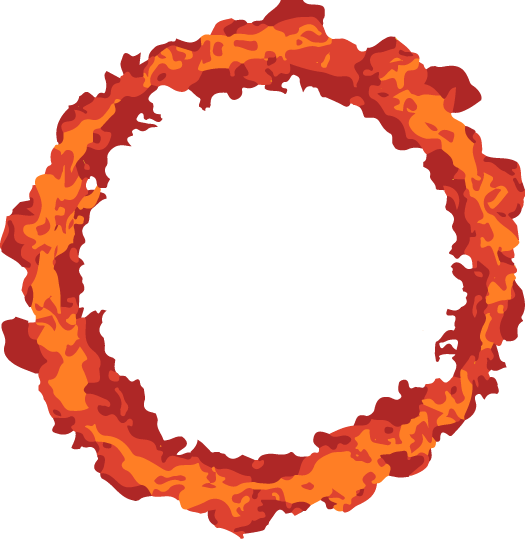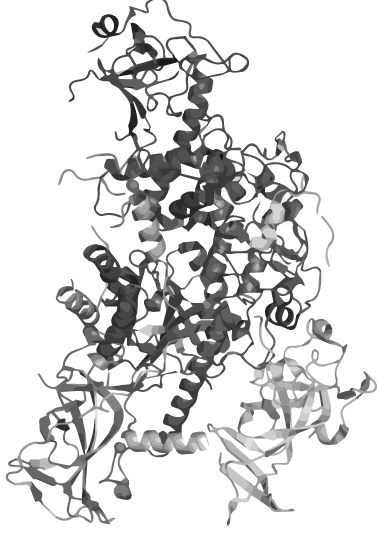Team:Heidelberg/Project
From 2014.igem.org
| Line 378: | Line 378: | ||
In order to offer a comfortable way to apply any of the above mechanisms to a protein and a biological system we designed a <a href=”/Team:Heidelberg/Toolbox_Guide”>toolbox guide</a> that provides step by step instructions for cloning based on the intein standard parts described in our <a href=”/Team:Heidelberg/Parts/RFC”>RFC</a>. | In order to offer a comfortable way to apply any of the above mechanisms to a protein and a biological system we designed a <a href=”/Team:Heidelberg/Toolbox_Guide”>toolbox guide</a> that provides step by step instructions for cloning based on the intein standard parts described in our <a href=”/Team:Heidelberg/Parts/RFC”>RFC</a>. | ||
| - | Besides achieving a solid and broad foundation for future intein applications in synthetic biology, we aimed on deeply exploring one of the functions provided in our toolbox: circularization of proteins. Synthetically connecting a protein's termini without disrupting its 3D structure and function is, however, a delicate task which has so far been accomplished only for relatively small proteins whose ends lie close to each other. With CRAUT we have brought into existence a powerful open-source software to predict an optimal linker to support circularization of a protein preserving its 3D structure and function. | + | Besides achieving a solid and broad foundation for future intein applications in synthetic biology, we aimed on deeply exploring one of the functions provided in our toolbox: circularization of proteins. Synthetically connecting a protein's termini without disrupting its 3D structure and function is, however, a delicate task which has so far been accomplished only for relatively small proteins whose ends lie close to each other. With CRAUT we have brought into existence a powerful open-source software to predict an optimal rigid linker to support stabilizing circularization of a protein preserving its 3D structure and function. |
| - | In order to provide us - and future iGEM teams - with a standard way of conducting consuming calculations we deployed a distributed computing platform we call iGEM@home that we also developed into a powerful science communication platform. | + | In order to provide us - and future iGEM teams - with a standard way of conducting the consuming modelling calculations we deployed a distributed computing platform we call iGEM@home that we also developed into a powerful science communication platform. |
| - | + | As an evaluation of the linker software we screened the capability of linkers generated by the software by circularizing lamda lysozyme with predicted linkers and experimentally evaluate the heat stability of the products. | |
| + | |||
| + | Based on the calibrated software, we constructed linkers to circularize the 871 a.a. long methyltransferase Dnmt1 and provide data suggesting that circular DNMT1 is more functional than its linear counterpart at high temperatures. Our results have strong implications for developing an innovative PCR-based technique that could revolutionize epigenetic studies and cancer research by maintaining the methylation pattern of the DNA template during amplification. | ||
| + | |||
| + | Besides a protein with potential medical and one with biotechnological applications we chose the hemicellulose xylanase as a third target for circularization, that has applications in large scale production in paper and food industry. | ||
| + | |||
| + | As an additional feature we decided to add another dimension to intein mediated modifications of our toolbox by developing optically induced small inteins that are photocaged by an <a href=”/Team:Heidelberg/Project/LOV”>As LOV2</a> domain. While sterically hampering intein dimerization in the dark, the LOV domain opens up when exposed to blue light, releasing the intein to proceed the splicing reaction. | ||
</p> | </p> | ||
Revision as of 03:27, 18 October 2014
 Project overview
Project overview
Proteins are the functional basis of all biological processes and being able to control and improve their functions through design and engineering is one of the fundamental goals of synthetic biology. Protein splicing, a process in which a catalytically active internal polypeptide termed INTEIN excises itself from a precursor protein, has been used by our team to alter the functionalities of proteins in various ways post-translationally. We have developed a comprehensive toolbox compromising five sets of standardized parts that provide standard mechanisms for specific modifications of proteins:
(1) A purification standard to faciliate purification of recombinant proteins.
(2) A construct that allows for post-translational fusion of protein domains to produce synthetic proteins
(3) A standard that allows for switching proteins on and off.
(4) One to oligomerize protein monomers.
And (5) perhaps the most intriguing standard construct of this toolbox that was built to produce heat stable proteins, which can be achieved by circularization.
In order to offer a comfortable way to apply any of the above mechanisms to a protein and a biological system we designed a toolbox guide that provides step by step instructions for cloning based on the intein standard parts described in our RFC.
Besides achieving a solid and broad foundation for future intein applications in synthetic biology, we aimed on deeply exploring one of the functions provided in our toolbox: circularization of proteins. Synthetically connecting a protein's termini without disrupting its 3D structure and function is, however, a delicate task which has so far been accomplished only for relatively small proteins whose ends lie close to each other. With CRAUT we have brought into existence a powerful open-source software to predict an optimal rigid linker to support stabilizing circularization of a protein preserving its 3D structure and function.
In order to provide us - and future iGEM teams - with a standard way of conducting the consuming modelling calculations we deployed a distributed computing platform we call iGEM@home that we also developed into a powerful science communication platform.
As an evaluation of the linker software we screened the capability of linkers generated by the software by circularizing lamda lysozyme with predicted linkers and experimentally evaluate the heat stability of the products.
Based on the calibrated software, we constructed linkers to circularize the 871 a.a. long methyltransferase Dnmt1 and provide data suggesting that circular DNMT1 is more functional than its linear counterpart at high temperatures. Our results have strong implications for developing an innovative PCR-based technique that could revolutionize epigenetic studies and cancer research by maintaining the methylation pattern of the DNA template during amplification.
Besides a protein with potential medical and one with biotechnological applications we chose the hemicellulose xylanase as a third target for circularization, that has applications in large scale production in paper and food industry.
As an additional feature we decided to add another dimension to intein mediated modifications of our toolbox by developing optically induced small inteins that are photocaged by an As LOV2 domain. While sterically hampering intein dimerization in the dark, the LOV domain opens up when exposed to blue light, releasing the intein to proceed the splicing reaction.

Establishing protein circularization as a NEW BIOENGINEERING TOOL in synthetic biology.
Contributing to iGEM with a new foundational advance!


Providing a NEW COMPREHENSIVE TOOLBOX based on inteins for modifying proteins post-translationally.
Sending 67 Biobricks to Registry of Biological parts!


Development of a NEW STANDARD to make the use of inteins easy and modular.
Establishment of a new RFC!


Showing that the toolbox WORKS: proteins are circularized and split fluorescent proteins are reconstituted.
Making Gels, Western Blots, Fluorescence-based Assays and Mass spectrometry to prove it!


Creating circular DNMT1 and showing that it is ACTIVE.
For the first time achieving the circularization of a large protein!
Circularizing LYSOZYME and XYLANASE, two very important proteins for research and industry!


Developing a NEW SOFTWARE to calculate customized linkers to circularize proteins.
Making CRAUT open-source for the scientific community.


Establishing a distributed computing platform called iGEM@home.
Using this platform as an entirely new way to reach out to the world with synthetic biology concepts!


Creating a NEW SOFTWARE to display the notebook on the wiki.
Distributing MidNightDOC to the iGEM community to help future teams organize their protocols!


Bronze
- Please find a comprehensive compilation of sponsors, partners and scientific contributors on our acknowledgements page.
- We also encourage you to take notice of the projects “Photo-intein” and “Mito-intein” by iGEM team Queens from Canada that may supply you with complementary information and tools for the use of inteins in synthetic biology!
- A list of links to more than 60 parts in the registry submitted by our team (being or not being part of the new intein toolbox) can be found here.

Silver
- We experimentally validated that our biobricks BBa_K1362000, BBa_K1362100 and BBa_K1362101 work as expected. For more information on the parts please visit the corresponding main pages in the parts registry or explore their involvement in our subprojects.
- Religious perceptions of synthetic biology have been part of several surveys during the past ten years of iGEM and Human Practices projects. Since religious groups cover the majority of worlds population, deliver moral values and wield power at the same time, we decided to dedicate a whole event on the topic of religion, philosophy and ethics regarding synthetic biology. Please find an evaluation of our event on the corresponding Human Practices pages.

Gold
- We improved the function of the already existing biobrick part BBa_K1175005 by optimizing and resubmitting the corresponding sequence of B. subtilis xylanase to the registry (Part: BBa_K1362020). In addition, we submitted a new part for expression of circularized xylanase (BBa_K1362022) that might be used in future applications with need for refined enzyme stability.
- Despite the fact that we focused on building a set of powerful soft- and wetware tools to help future iGEM-teams developing and realizing projects in synthetic biology, we are happy to announce that we were also able to help out several team during the course of our project, aspecially with sending our expression vectors. Read more abou in in our Collaborations.
- In the style of of the new iGEM community labs track that involves science amateurs “beyond the accolades of scientific publishing and economic reward”, we sought for a new way to involve laymen in actual science and build a strong community of well informed supporters and communicators of synthetic biology at the same time. Now we proudly present the crowd sourcing and communication platform iGEM@home.
 "
"








 Achievements
Achievements Medal Criteria
Medal Criteria